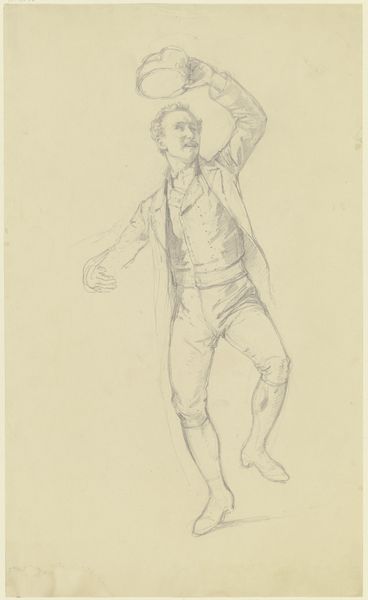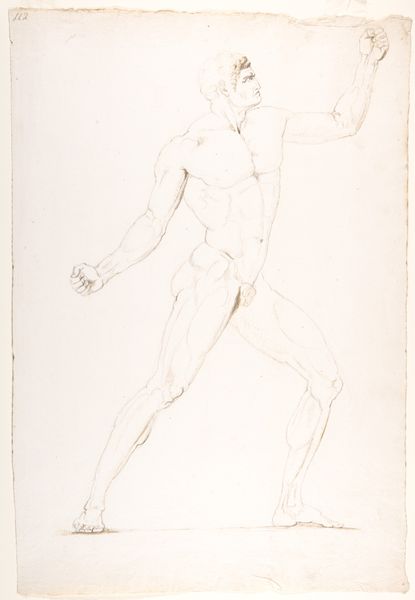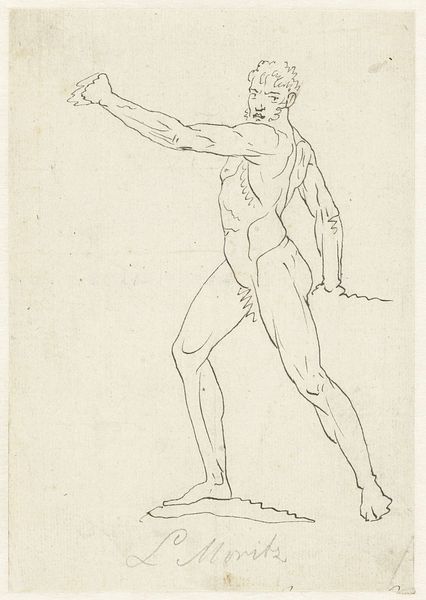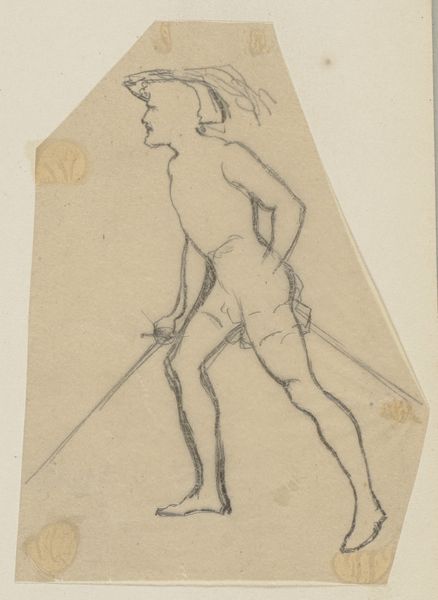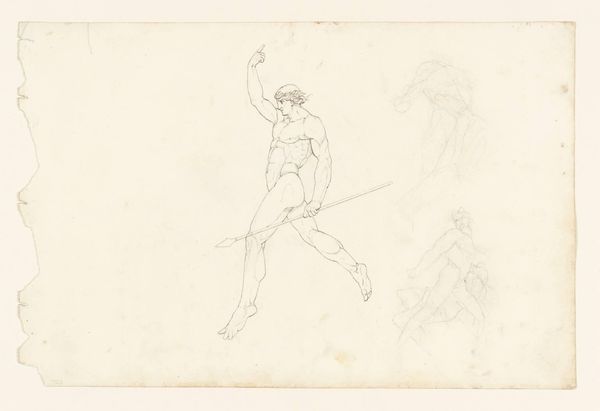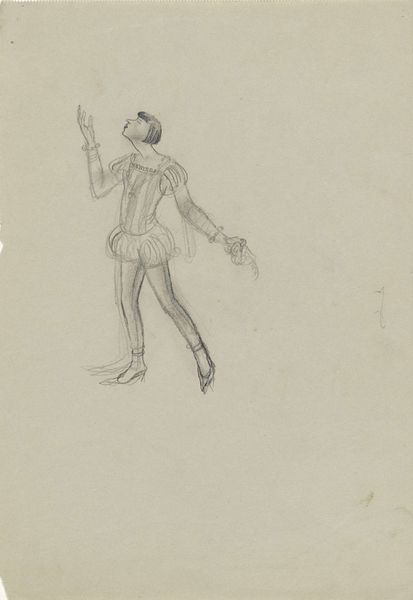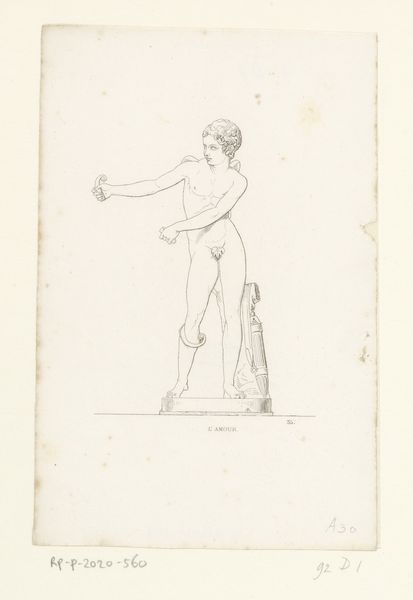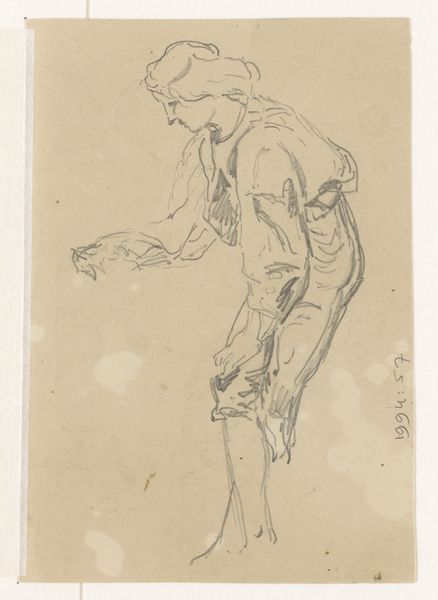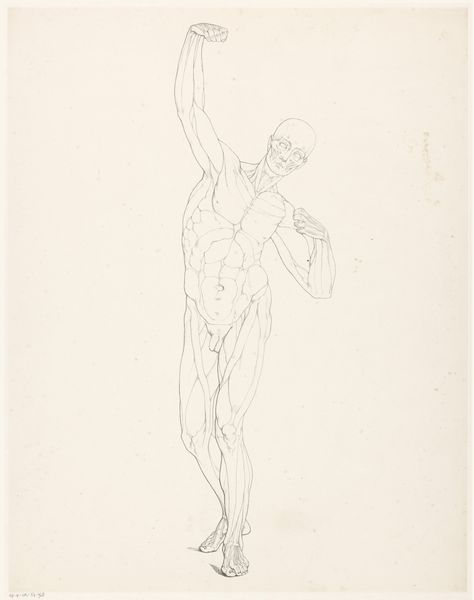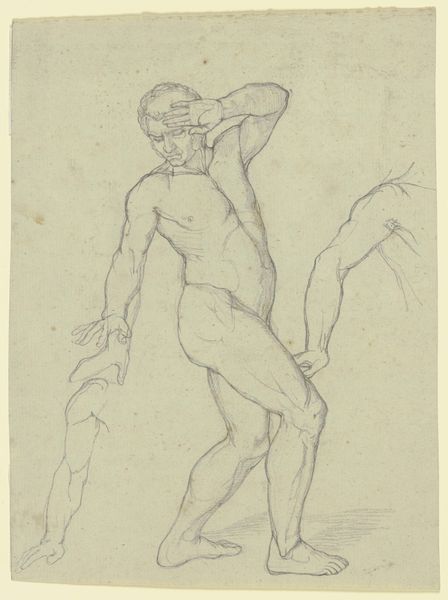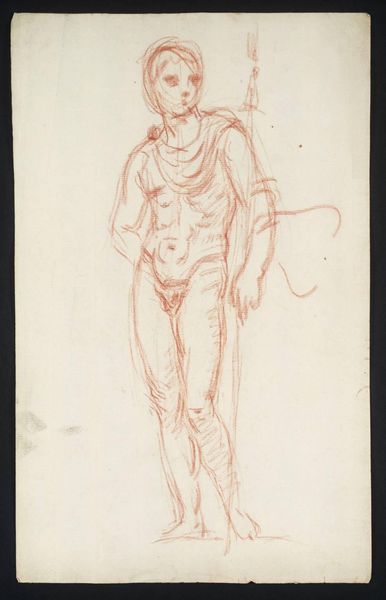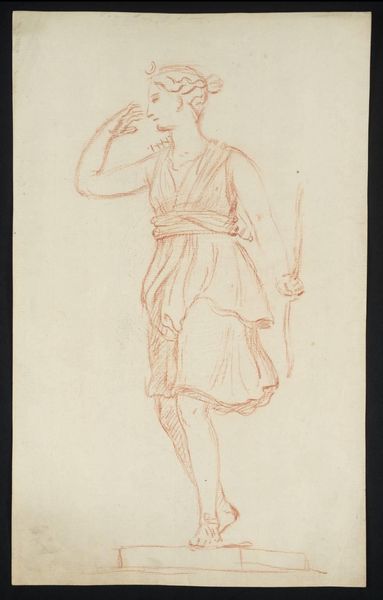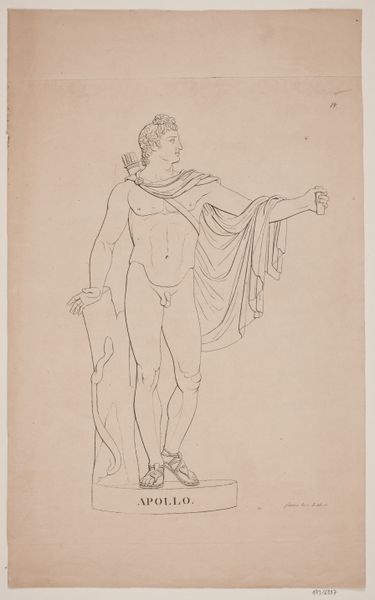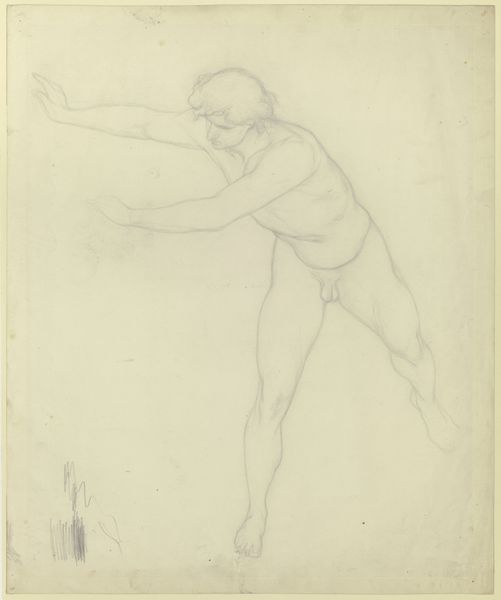
drawing
#
portrait
#
drawing
#
imaginative character sketch
#
light pencil work
#
16_19th-century
#
greek-and-roman-art
#
cartoon sketch
#
figuration
#
personal sketchbook
#
german
#
idea generation sketch
#
ink drawing experimentation
#
pen-ink sketch
#
sketchbook drawing
#
history-painting
#
storyboard and sketchbook work
#
academic-art
#
sketchbook art
Copyright: Public Domain
Gustav Heinrich Naeke created this sketch of a nude, antique warrior with a sword sometime before his death in 1835. During Naeke’s lifetime, Europe was caught up in a surge of Neoclassicism, which drew heavily on classical antiquity as a source of artistic and cultural inspiration. Here, Naeke outlines the warrior in a style reminiscent of ancient Greek sculpture. The warrior’s nudity is a reference to the idealization of the male form prevalent in classical art. The sword and muscular physique symbolize strength, courage, and readiness for battle, all virtues associated with traditional masculinity. The gaze, the gesture, they give us very little affect, the drawing is almost forensic in its assessment of the male body, as if searching for the key to unlock what heroism meant at this moment. This piece invites us to reflect on how classical ideals of masculinity have been historically constructed and how they continue to shape contemporary notions of identity and power.
Comments
No comments
Be the first to comment and join the conversation on the ultimate creative platform.
